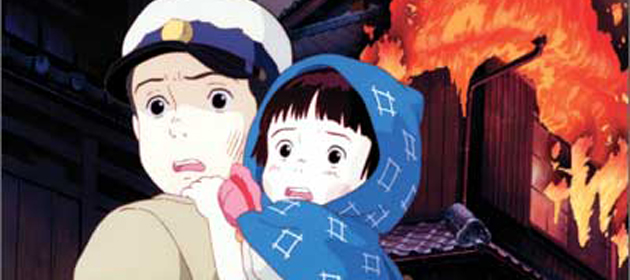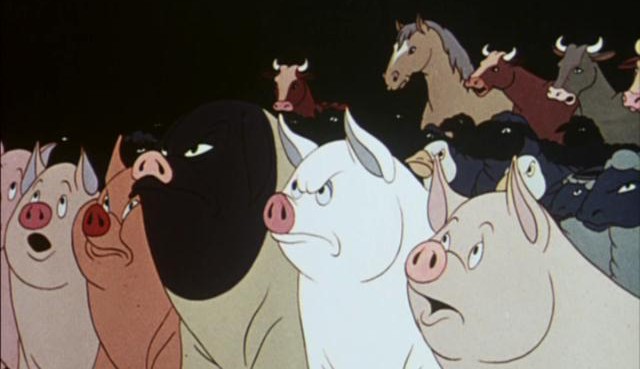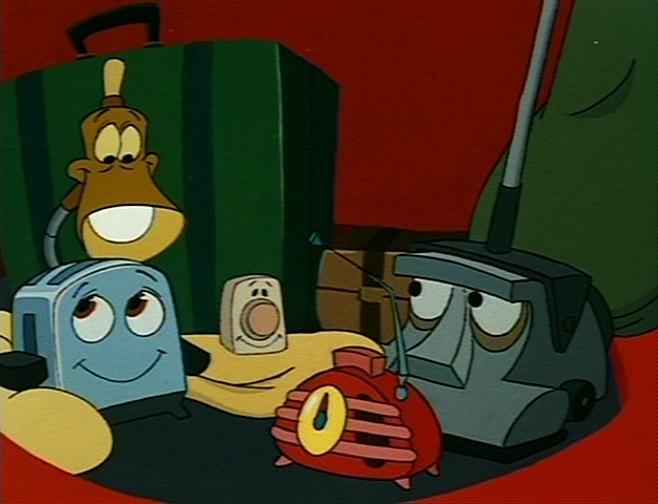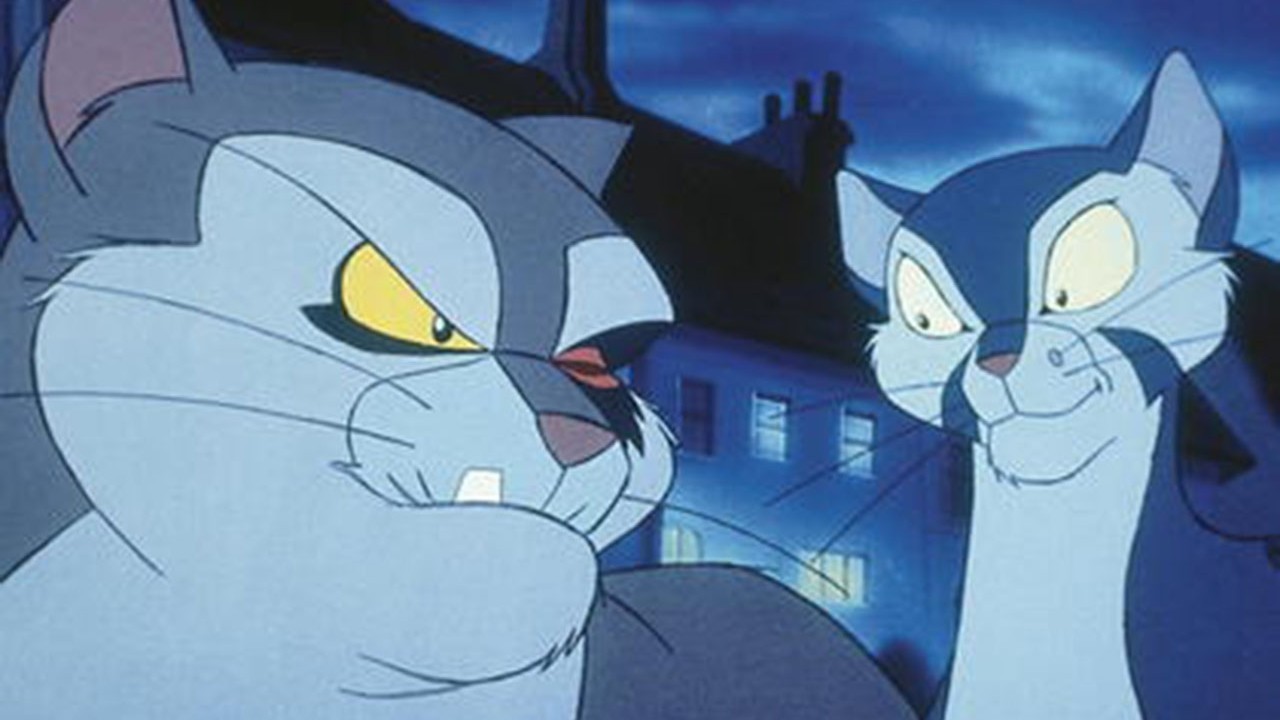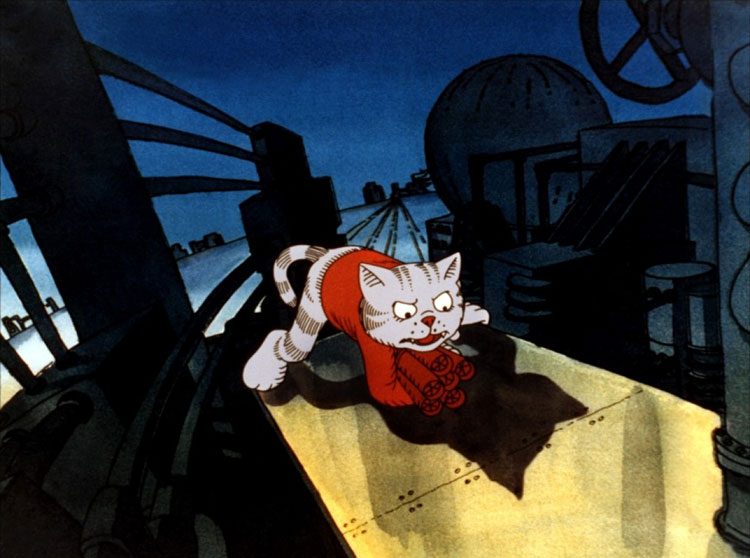In many Western circles, animated film is fundamentally affiliated with child-friendly films spawned by the likes of Disney and Pixar. From Snow White and the Seven Dwarfs to Toy Story, the capability of animation to portray imaginative worlds in imaginative ways has enriched childhoods for several generations.
Of course, animation has not been limited to Disney nor to children, and many of the greatest stories told through cinematic drawing have arisen in the East as well. The likes of Hayao Miyazaki and Katsuhiro Otomo have created absorbing dramas and adventures that breathe through animated images, telling tales for both children and adults alike. Yet, this article does not go on to catalogue some of the high-status animated world features, but rather the cornered-off, darkly-drawn exceptions.
Beneath every kind of aesthetic surface exists a dirty underbelly; and animated film is no exception. Perhaps the main difference is that when animation does dare to rear an ugly uncensored head, it is all-the-more intimidating given its typical tie with innocence.
What follows is a selection of films that convey an astonishing distance between image and content. Films that muddle the bright connotations of animation and provide a disturbing alternative. For those seeking an often unexplored sidebar of cinema, this list can act as a push into pastures new; a peek at cult productions that are destined to linger on the fringes of common culture following mainstream critical backlash.
On the other hand, for those who get a little green around the gills when censorship is submerged, this list could act as a gentle caution. Cartoons aren’t always cuddly.
10. Animal Farm (1954)
For many, George Orwell’s literary classic Animal Farm will need little introduction. A bold political allegory wrapped in farmyard packaging, Orwell’s best-known novel (aside from perhaps ‘Nineteen-Eight-Four’) is given an eye-catching lick of paint in this adaptation by John Halas and Joy Batchelor.
Never wandering too far away from its literary origins – save for an ending that opts for vicious revenge rather than a slow descent into hopelessness – this 1954 animation serves to capture Orwell’s Stalinism satire with aplomb.
From the snorts and scoffs of the subtly tyrannical pigs to the whimpers of other confused animals, the film provides the classic text with some haunting audio and imagery – including vibrant stills of countryside and shadowy corners of corruption where shady doings take place. Covered in school classes all over the world, Animal Farm is a dark and disturbing cinematic adaptation of a classic dystopian read.
9. The Brave Little Toaster (1987)
Disney manages to dance its way onto this list of dark and disturbing animated films with The Brave Little Toaster; a 1987 adaptation of Thomas M Disch’s novel written seven years prior.
Disney have rarely been averse to daubing their films with dark moments – Dumbo’s drunk hallucinations, Bambi’s fallen mother, and Mufasa’s trampling in the Lion King to name a few. But Jerry Rees’ directorial effort surpasses the fleeting nature of Disney tragedy; smoothing out a selection of dark-themed foundations that underlie the cartoon for its duration.
A set of aging electrical appliances including a vacuum, blanket, lamp, radio and toaster are forced to venture into the wilderness to find their master, all-the-while having to convince themselves that their former owner has not left them in his old home to rust.
Filmed in a scratchy television style, The Brave Little Toaster employs a variety of disturbing surface aesthetics that threaten to shock younger viewers – including an air conditioning unit blowing itself up and a nightmare sequence where a clown-like demon leers over the top of the little toaster himself.
The film even intermittently dabbles in sexual innuendo. Yet the real disconcerting nature of the film stems from its themes of abandonment, resentment, anger, age, and becoming obsolete. Whilst the novel’s finale sees the appliances venture on to a new owner, the film’s ending takes a more child-friendly turn that brings the story full circle back to the original master. It’s welcome relief from an unsettling tale.
8. Felidae (1994)
An adaptation of the 1989 novel of the same name, Felidae is a grisly German neo-noir film with the audacity to parade as cat-themed cartoon. Opening with deceitful tranquillity as a gentle Boy George song floats over the opening credits, Felidae doesn’t take long to shake its association with typical animation.
The protagonist is an intelligent cat named Francis, who narrates the dark tale and goes on to warn viewers – “This is my story. And it ain’t gonna be pretty”. The story begins with Francis moving into a new neighbourhood, and immediately discovering a cat corpse in the backyard. More bodies soon appear, and after acquiring the help of a rugged local feline named Bluebeard, Francis goes about attempting to find the perpetrator.
The animation is striking, and cat-like mannerisms are captured with admirable accuracy as the animals slink about the screen in lifelike fashion. This level of rich detail is however also employed during bouts of brutal violence, terrifying dream sequences, and even a coarse sexual encounter between Francis and a seductive female cat.
Littered with four-letter language and clips of carnage, the film is intriguing as a murder mystery, but astonishing in its cartoon cruelty. A scene in which dismembered cats dangle from strings alone is enough to burn its way into the brain forever. The film plays a little like David Fincher’s ‘Se7en’, and that in itself should be enough to scare away certain audiences.
7. Fritz the Cat (1972)
Ralph Bakshi’s Fritz the Cat probably belongs in another dimension. Based on the comic strip originally compiled by Robert Crumb, this animated adaptation is a film steeped in vulgarity from beginning to end. Consciously crude and purposely puerile throughout, Fritz the Cat has – in the words of film critic Vincent Canby – “something to offend everyone”.
Whilst the racial slurs and foul language aren’t so much disturbing as they are politically incorrect, scenes of colourful cartoon cats using drugs and having sex in a bathtub are enough to send the lower jaw bone crashing through the floor. Aside from its X-rated escapades themselves, perhaps Fritz’s most gape-inducing asset is its smugness with which it enacts its exploitation.
The eponymous star feline leads the way, nonchalantly performing acts of debauchery that fill each colourful frame. The plot, if you can call it that, sees Fritz leave behind his boring life to embark on an adventure that involves heroin, rape, theft, and violence. Some will find Fritz the Cat funny.
Some will be outraged. Many will be stunned. But most will agree that it remains one of the most unusually dark animated films of all time, and thoroughly deserves its place on this list if nothing else.
6. The Plague Dogs (1982)
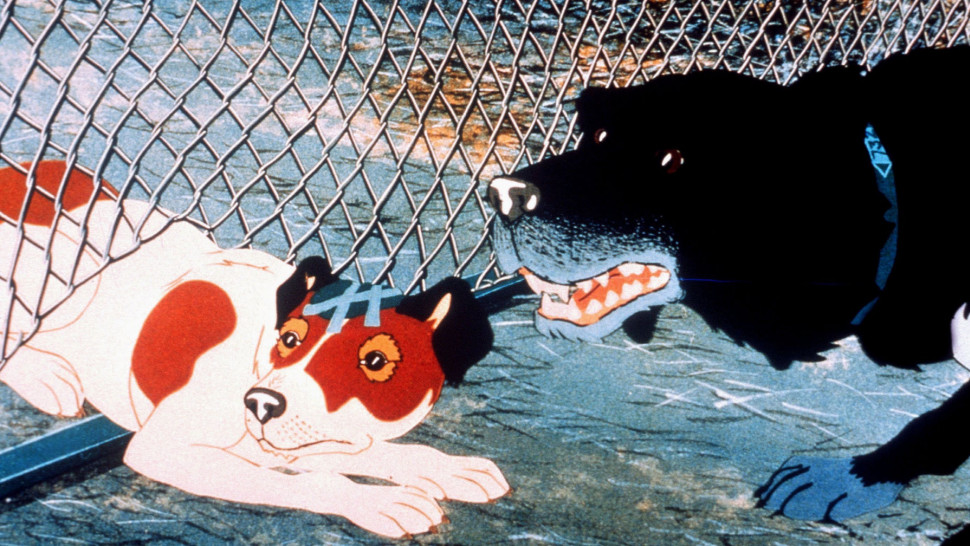
Richard Adams and Martin Rosen teamed up for a second time in 1982 to form an animated version of The Plague Dogs; originally a novel that Adams had written five years after Watership Down. The film tells the tale of two dogs named Rowf and Snitter, who manage to escape from an animal-testing facility and away from the evil “white-coats” who subject them to endless torture.
Out in the open they meet a cunning Geordie fox named ‘The Tod’. “Stick wi’ me and we’ll all be champion” the fox tells them. But the cruel realities of being a stray soon catch up with the dogs, and as time wears on and food becomes scarce, they are forced to tear any animal they see limb from limb just for something to eat. Eventually they are even forced to feed on a human corpse. The dogs’ feral behaviour raises an alarm in the countryside, and before long the “white-coats” are out to recapture their old animals.
Covering a wide range of themes including media morality and mass societal panic, The Plague Dogs is an undeniably difficult watch. As the dogs scamper through the wilderness, Snitter is occasionally reduced to howls and hallucinations (following his exposure brain surgery back at the facility), allowing the film to occasionally substitute the cold, bleak landscape for cryptic noir dream sequences.
The whole picture remains wrapped in an impenetrable cloak of despairing sounds; from the desperate pant of Rowf as he’s submerged under water for survival tests, to the chilling scrape of a shovel that scoops up the dead animals who’ve succumbed to the cruelty. It cuts close to the bone in more ways than one, casting a very real ugliness across the film for its duration.
A tale of tragic circumstance told with sophistication and intelligence, it manages to raise several vital issues before arriving at its ambiguous ending, and threatens to repulse and shock viewers of all shapes, age and sizes.
